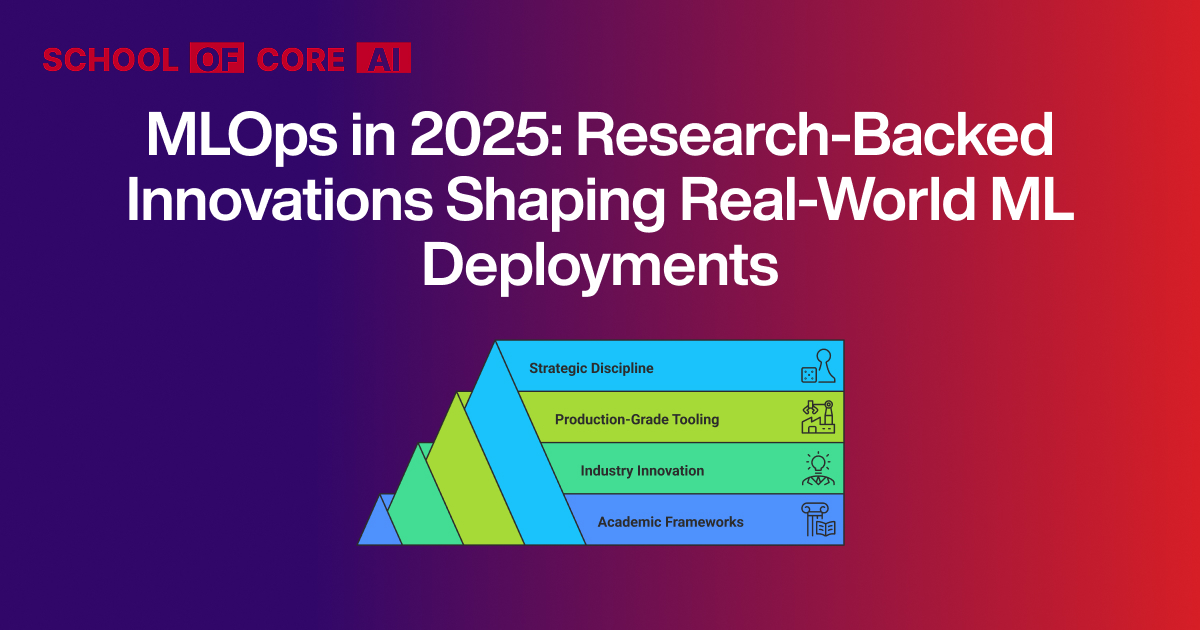
MLOps in 2025: Research-Backed Innovations Shaping Real-World ML Deployments
MLOps in 2025: Research-Driven Tools & Trends Powering Scalable AI Deployments
2025-05-28T00:07:00.000Z
As machine learning (ML) integrates more deeply into enterprise systems, the demand for scalable, governed model operations is accelerating. In 2025 MLOps has matured into a strategic discipline that enables consistent, reliable and ethical AI deployment. Recent academic research and evolving tooling are reshaping how organizations manage ML in production.
This blog highlights impactful developments from the past quarter blending academic frameworks, industry innovation and production grade tooling.
A Unified MLOps Lifecycle
A comprehensive framework proposed by Stone et al. defines a complete MLOps lifecycle that connects business objectives to technical execution. Key highlights include:
- Structured phases from data ingestion to LLM-specific monitoring.
- Integration of Responsible AI practices (bias, fairness checks) into CI/CD.
- Role-based accountability for MLOps engineers, data scientists and reviewers.
This framework enables scalability and reproducibility, especially for enterprises with compliance requirements.
The Emergence of Model Lakes
“Model Lakes” offer a centralized, versioned repository for datasets, models and code allowing:
- Full traceability of experiments and deployments
- Better reusability of trained models across teams
- Audit-friendly infrastructure for enterprise ML
CI/CD Practices in Machine Learning
A recent survey highlighted key challenges in applying DevOps to ML workflows:
- Difficulty in test coverage due to model variability
- Long training durations affecting build pipelines
- Reproducibility issues caused by external data drift
Incorporating dataset validation, metric thresholds, and automated retraining into CI/CD has become essential for scalable MLOps.
LLMOps with AWS SageMaker and MLflow
The shift toward LLMOps is evident in AWS's demonstration combining SageMaker, MLflow, and FMEval:
- Training and fine-tuning with SageMaker
- Prompt-level tracking with MLflow
- Safety and bias testing using FMEval
This represents the move from “model deployment” to controlled AI evaluation and feedback loops.
Scalable Model Monitoring: MLMA Framework
The MLMA (Machine Learning Monitoring Agent) framework introduces:
- Real-time dashboards
- Reference-loss testing to detect data drift
- Automated retraining triggers with human-in-loop control
This framework is particularly effective for high-volume, ever-changing data environments like logistics or recommendation engines.
Tooling and Ecosystem Updates
Several core MLOps tools saw significant upgrades:
- Kubeflow 1.10 added parallel loop support, revamped model registry, and KServe integration.
- MLflow 2.22 introduced Gemini embeddings, OpenAI tracing, and Azure Data Lake support.
- Weights & Biases joined forces with CoreWeave, offering GPU-native MLOps infrastructure.
Want to explore these tools hands-on? Check out our MLOps course designed for working professionals.
Final Thoughts
From standardized lifecycles to LLMOps pipelines and scalable monitoring, MLOps in 2025 is evolving fast. Organizations aiming to ship reliable, responsible AI need a structured MLOps strategy rooted in both academic rigor and real-world application.
Whether you're leading a data science team or scaling enterprise-grade AI, now is the time to align with modern MLOps practices.
Learn how to build production-ready ML pipelines with our specialized MLOps training program.